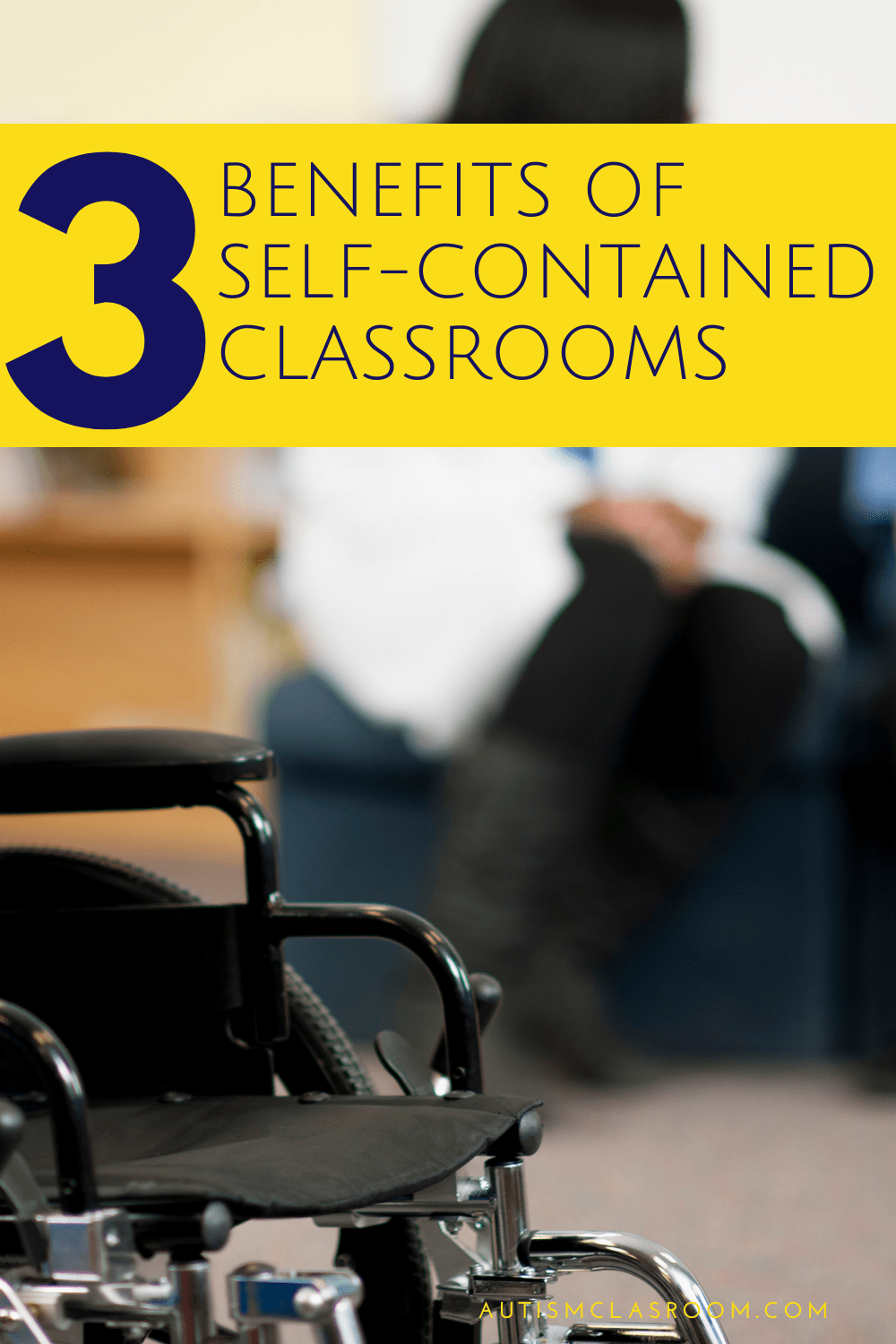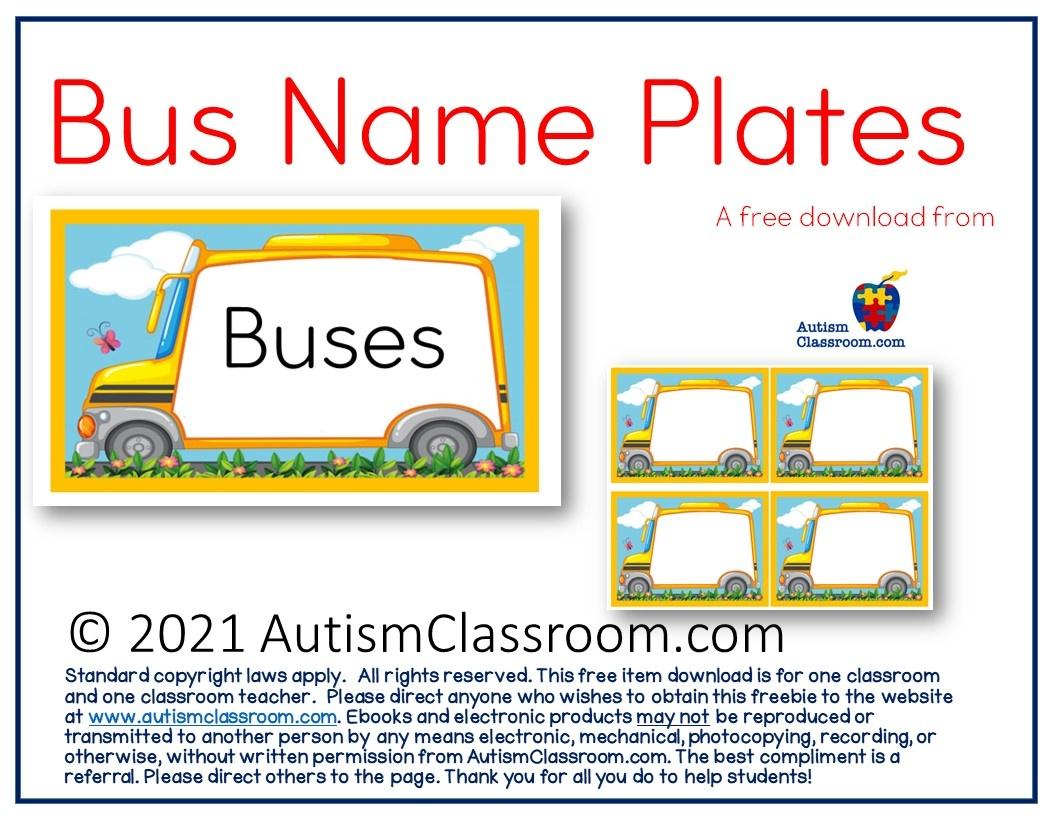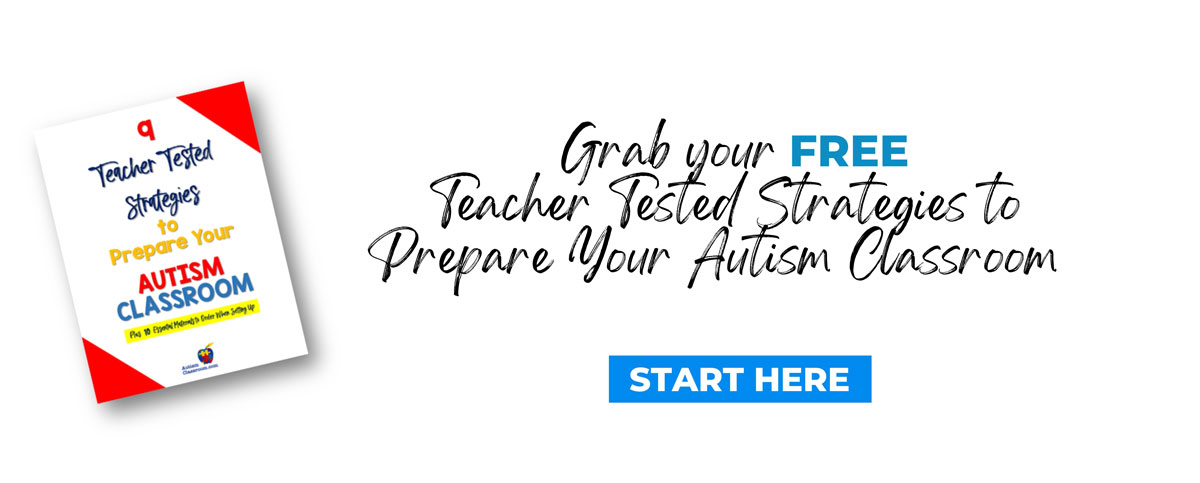3 Benefits of Learning in a Self-Contained Classroom
Inside: Self-contained classroom definition and benefits, as well as books, workbooks and resources to support the classroom.
This page includes affiliate links.
What is a Self-Contained Classroom?
A self-contained classroom is generally explained as a classroom for special learners in which all members of the classroom are students with special needs. The classroom may be part of a general education school building or a separate facility for students with special needs. Some classrooms operate as fully self-contained and have students stay in the room for the entire day. On the other hand, other self-contained classroom models have instruction in the room, but then go to lunch, specials and recess, etc. with their general education peers.
Self-contained classes usually have no more than ten students and are typically led by a certified teacher. Students in the class are often assisted by a Para-educator who is also there to provide additional support during instruction. These classes enhance students' ability to learn by limiting the class size and by addressing their special needs with smaller groups, individualized instruction, and a flexible, but nurturing environment.
3 Benefits of a Self-Contained Class
These classes can be advantageous for any student struggling to succeed academically because of a special need or learning difficulty. Some people debate if the inclusion model should be used with all students. However, there are still many self-contained classrooms in existence that many teachers, parents and students view as beneficial. Here are the top three benefits of learning in a self-contained special education classroom!
Smaller Class Size
Average U.S. class sizes typically hold anywhere from 25 to 40 students, depending on the grade level. That is an excessive number of kids for just one teacher to handle, especially if some have difficulty keeping up with the academic load of the class. Often, students who have trouble with lessons could be “left behind” because teachers, even if they really wanted to, might not be able to dedicate enough time or attention to each child.
A self-contained classroom allows students to participate in smaller classes and receive one-on-one lessons with (in most cases) a certified teacher. The teachers can properly support learning because they can carve out the plan the time to sit down with each student and in smaller groups. This is especially true when there is a Para-Educator in the classroom. They can also form stronger rapport in smaller environments, which might motivate students and keep them on track to meet their goals.
Individualized Instruction
When the class size is smaller, teachers can personalize the curriculum to best support each individual, whether using a different teaching method or implementing a more intensive intervention. The instructors can alter their strategies and lessons based on what each child struggles with. They can choose to develop specific skills that the student is in need of developing. This positively impacts the students, as they receive an education tailored to their strengths and needs rather than a large, busy classroom that may move too fast or is not meeting their current needs.
More Flexibility
When there are too many students in one class, many times individualized assistance and personalized instructions are not part of the deal. General, globalized instruction take flight. Students with special needs could be at a disadvantaged in a larger setting if the general educator and special educator do not get a change to collaborate about teaching resources that personalize the instruction. Special education experts have insight into ways to modify materials to support various learning needs. When you have larger classrooms, it can be challenging to change up your curriculum or modify it spontaneously, even if the student may need the support in that way.
However, when you have fewer students, you have greater control over the lessons, granting you the flexibility to alter them based on each student's needs. You can have a much more individualized lesson plan and schedule since you will work through it at a different pace every day. In a typical classroom, the teacher must continue with the instruction, even if some students do not fully understand the material. In a self-contained classroom, the teachers can change things up as they see fit, stay on a topic for longer, or utilize a different method to ensure that the student can get the material that is being presented.
Some educators and parents advocate against self-contained classrooms since it limits the student’s interaction with non-disabled peers, but for some families, they love the benefits of the smaller group size and the nurturing classroom environment of a self-contained classroom and they view it as a safe space. In the end, each family, along with their school team, will need to decide what works best for the student.
More About This Topic
Creative Strategies That Special Education Classroom Teachers Know Will Leverage Their Teaching
If You are Just Getting Started in Your Special Ed Classroom
Tips for running a successful classroom are always helpful. Here are some tips.
This may be helpful if you are just starting.
Ideas for Planning the Day in your Special Ed Class
Making a schedule that works is important.
Curriculum for a special needs classroom can be difficult to find. This blog has some great ideas.
Comparison with Inclusion (An Important Special Education Discussion)
You can’t talk about this topic without the discussion of inclusion! This webpage offers some comparison points to think about.
This offers another explanation of the topic, if you are interested in learning more.
Inclusive Classrooms are an important part of the special education of services. See some ideas about that here.
Special Needs Schools pros and cons are listed on this page.
Working with Students with Multiple Disabilities
Find out "What are Multiple Disabilities?" in this article.
Students with multiple disabilities and visual impairment are the topic on this special needs education blog.
Multiple Disabilities are sometimes called Low Incidence Disabilities. Here is more on the topic.
If you are a special ed teacher who is looking for some instructional strategies, you may find them at this place.
This discusses supports for students with multiple disabilities.
Here, you can find parent information and resources for parents just starting their journey.
Looking for some strategies or modifications, try here.
What a great way to get the classroom together on this page.
Designing the classroom is important and there are some ideas on that link.
This webpage has teacher tips about special needs education to encourage student involvement in learning.
Support for Visually Impaired students can be found here.
Links to Tips for the Special Education Classroom
Books for Self-Contained Teachers
A Survival Guide for New Special Educators 1st Edition
The Special Educator's Toolkit (Everything You Need to Organize, Manage, and Monitor Your Classroom)
Comprehensive Literacy for All (Teaching Students with Significant Disabilities to Read and Write)
A Teacher's Guide to Special Education: A Teacher's Guide to Special Education
How to Differentiate Instruction in Academically Diverse Classrooms
Teaching Math to People With Down Syndrome and Other Hands-On Learners: Basic Survival Skills (Topics in Down Syndrome) Book 1
Fine Motor Skills for Children with Down Syndrome: A Guide for Parents and Professionals (Topics in Down Syndrome)
Systematic Instruction for Students with Moderate and Severe Disabilities
Teaching Students with Moderate and Severe Disabilities
Teaching Communication Skills to Students with Severe Disabilities
Physical Activities for Young People With Severe Disabilities
AAC Strategies for Individuals with Moderate to Severe Disabilities
Core Words for Classroom & Home: Developing Verbal Communication Skills and Augmentative and Alternative Communication (AAC) Abilities
Behavior Support & Social Skills Support: A Storybook About Social Behaviors: Short Stories for Students with Special Needs
Books and Workbooks Resources from Autism Classroom
Social Skills Printables Workbook: For Students with Autism and Similar Special Needs
Language Skills Printables Workbook: For Students with Autism and Similar Special Needs
Alphabet Trace and Reinforce Workbook
The 1:1 Assistant's Guidebook: Practical Ideas for Learning Support Aides Working with Students with Autism
Comprehension Passages About Social Skills: For Students with Social Challenges & Similar Special Needs (Using Kindergarten High Frequency Words)
The Morning Work Workbook: For K, 1st & 2nd Grade Students Learning Life Skills
Self-contained Class Freebie: Get your freebie below and don't forget to join our mailing list to find out when there will be more!!!






